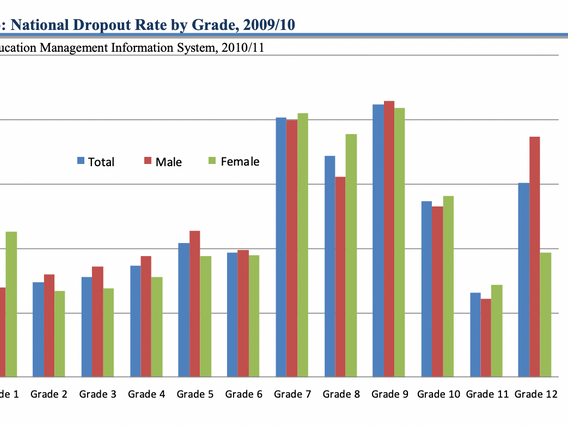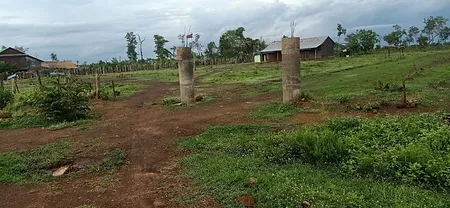by Anna Takai
As a student living in a developed nation, with fulfilling resources and having school as a daily routine, I believe education should never be a matter of luck, but a fundamental human right. Education is the way for youth to turn their dreams into reality. It truly transforms lives. Thus, I strive for a society, where every child can be provided access to quality education, anywhere, anytime.
According to USAID School Dropout Prevention Pilot Program, 20% of students in Grade 7 (the first year of secondary school) dropout from school. (In Cambodia)

There are many possible reasons for this dropout trend, including economics and environmental. Here are just a few:
The distance in location between primary and secondary school

I had the wonderful opportunity to talk to Mrs. Soren Soeum (the ministry of education in Cambodia) and the principal of Prey Kol Primary School (the school, a very distant one in the rural areas of Cambodia). The principal referred to how the closest secondary school was located very distant from his primary school, so most of his students feel lazy and give up after their primary years (grade 6). They mentioned how this is a frequent cause for children in rural communities. Also, because there aren’t any roads in rural areas, so it is just so hard for children to manage.
Are economically unstable, and have to do chores to help sustain the family

3/4 of the at-risk students, dropouts, and dropouts’ parents/guardians cited the need to supplement income through household chores or domestic work. About 1/2 cited the need to work to earn money. (http://schooldropoutprevention.com/country-data-activities/cambodia/)
Unable to keep up with lessons
About 1/3 of dropouts said they were unable to keep up with their lessons. (http://schooldropoutprevention.com/country-data-activities/cambodia/)
Chronic absenteeism (missing more than 10% of school days for no specific reason)
Over 1/3 of dropouts have missed more than 15 consecutive days of school
66% of at-risk parents/guardians reported they have kept their child at home when not ill (even parents aren’t willing to bring their children to school)
56% of the parents/guardians reported they were not aware of their child’s school attendance (children don’t have enough responsibility)

(http://schooldropoutprevention.com/country-data-activities/cambodia/)
An example of an organization that promotes their existing solution:
Cambodian Consortium for Out of School Children
these are posts from the partnerships of CCOSC
(four-year cooperative project between NGOs and the government that began in November 2020 to support out-of-school children across Cambodia jointly sponsored by the Ministry of Education, Youth and Sport and funded by the Qatar Fund for Development.)
Signed by The Ministry of Education, Youth and Sport and Qatar Fund for Development (supported by donating $13 million)
The partnership between Aide et Action in partnership with Educate
a Child, a global program of theEducation Above All Foundation (further by donating $21 million)
Distributed over 4,000 radios to ethnic minority students in Rata
nakiri, Mondulkiri and Kratie provinces
Developed a repository of online resources accessible and free to all (43 pieces of teacher training content, 2,344 book titles including 572 audiobooks)
Refurbish (rebuild) classrooms in dozens of schools across the country and invest in new teaching and learning materials, handwashing stations, and water filters in the early stages of school re-opening.
Support catch-up classes to struggling students to help prevent dropouts
Create life skill courses to help with social and emotional connections
Setup of a database tracking system to identify students at risk of dropping out of primary school
will enroll over 116,000 out-of-school children across all 25 provinces into education by 2024.
Possible solutions to reduce dropouts?
It would be important to…
- make education something fun and refreshing for the students, not a burden
- change their mindset, and think more about their future
- ALWAYS maintain children’s motivation
- government intervention
Create career training workshops
Not only would this help children think more about their future (think education in a more positive way), but it would also maintain children’s motivation.
I believe that education is the powerful resource that guides our path to our dreams
- https://roadtripnation.com/roadmap
This would be a great resource to bring up to classes (I actually was introduced to this in my career training class in the past)
Children would be able to know their dreams, work towards their dreams, and feel the blessing that education provides us with.
- https://www.thebalance.com/
This is a service owned by the New York Times, that provides articles and other information regarding the business field. Basically, how to succeed in your future business.
Other quizzes:
https://www.princetonreview.com/quiz/career-quiz#!q1thru4
https://www.careergirls.org/explore-careers/career-quiz/
https://www.educations.com/quizzes/career-test-21636
These topics have been in the spotlight for schools in developed nations as well. Countries have realized how important it is for children to keep their careers in mind, and for the government to weave it into the education curriculum.
Create follow-up/supplementary lessons (cram school ty
pe)
Just like CCOSC did in their service, I believe that creating supplementary classes would help children who are falling behind in school lessons. (which is 1 in 3 children dropping out, say they weren’t able to keep up)
More Government Help
If we were to prioritize the long-term economic benefits, the government should support families who are living in poverty, financially. This would reduce child labor, which would provide more and more opportunities for children to attain their most high-quality education.
Gather and collect used English books at my school and donate them to organizations
Not only would this make education more fun for the children, bu
t it would also help children who are already in school, fix their bad habits, and make the most of their time AT SCHOOL.
When I had the opportunity to talk to Mrs. Soren Soeum (the ministry of education in Cambodia) and the principal of Prey Kol Primary School, a ver
y distant school in the rural areas of Cambodia, he mentioned how the students in his school struggle with using iPads and devices in a good way, so he wants them to go back to the traditional way of learning: through books. (in the interview I had with them, they were providing more English opportunities for the children there, talking about how they want to improve their English curriculum. Thus, they mentioned that it would be helpful to donate Khmer books, but English books would be better for them. Due to the lack of exposure for English books in Cambodia)
When I visited the Tokyo Inspired School, I read books to some
of the students, but there weren’t enough books compared to the number of students in the school. An evident lack of books.
Books (both picture books and novels) are one of the most effective ways to enlighten children with Edu.
According to Markham Public Library, books improve vo
cab, sleep, stress, and a form of entertainment.
One last note:
SDGs 4, the education component is in synergy with a lot of other components (such as SDGs1 on poverty, SDGs 5 on gender inequality, and SDGs 10 on inequality)
I would want to discuss a little bit about education and poverty…
SDGs 4: education vs. SDGs 1: poverty
Creating policies on education may increase poverty rates.
(PLEASE REMEMBER THAT THIS IS MY OPINION)
I believe that education should be prioritized for long-term benefits.
We may prioritize poverty over education because of its short-term benefits. If children don’t go to school and help do house chores to help sustain th
e family, it will be a short-term benefit due to the fact that the poverty rate may decrease or maintain the same throughout the private sector.
However, I believe education should be prioritized for its long-term benefits. If more and more children go to school and experience the amazing feeling to be able to attain education, if the government provides more support to the education system, the country would be able to create many new talents for the next
generation. This would flourish the economic terms and would overall be an advantage for the country.
Thus, I believe prioritizing education is the best choice right now.
References:
http://schooldropoutprevention.com/wp-content/files/reports/Trend_Analysis_Cambodia_English.pdf
Mrs. Soren Soeum and the principal of Prey Kol Primary School
Cambodia
https://action-education.org/sea/cambodian-consortium-for-out-of-school-children/
